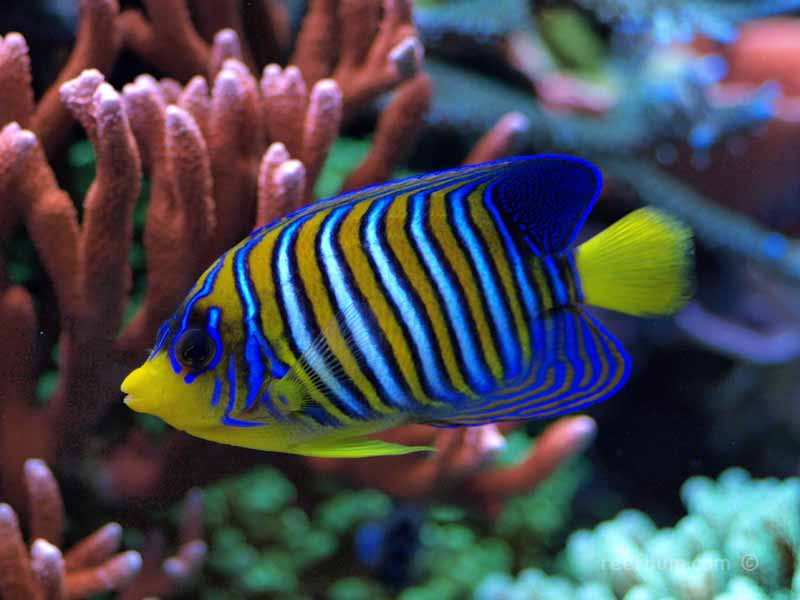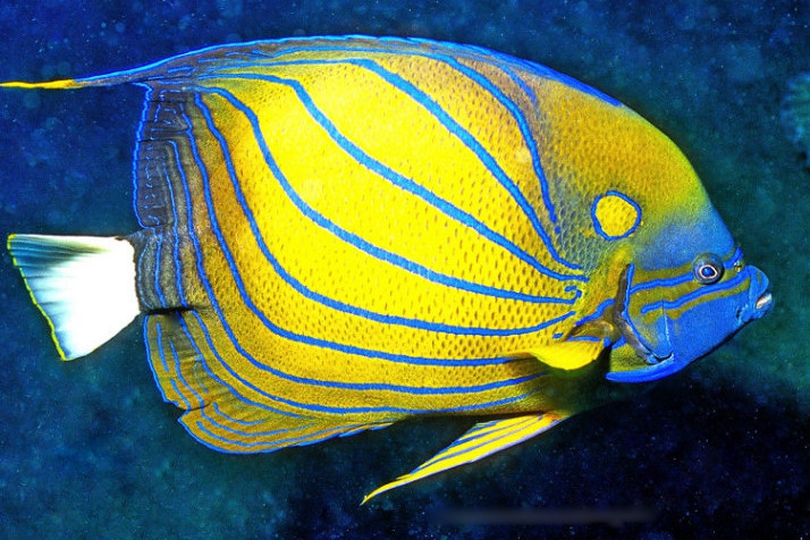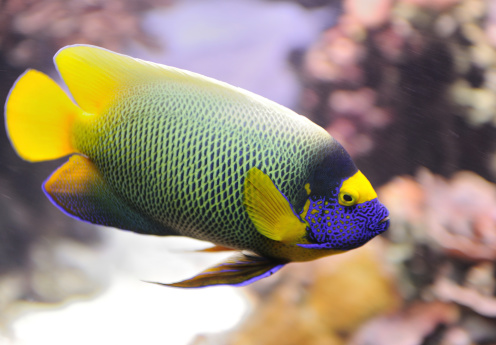Angelfish in the Maldives: A Dive into the Vibrant World of These Tropical Beauties

The Maldives is renowned for its crystal-clear waters, stunning coral reefs, and diverse marine life. Among the numerous sea creatures inhabiting these reefs, the angelfish is a particularly captivating sight. Known for their striking colors and graceful movements, angelfish are a favorite among divers and snorkelers exploring the Maldives' underwater world.
Introduction to Angelfish in the Maldives
The Maldives, an archipelago in the Indian Ocean, boasts one of the most pristine marine ecosystems in the world. With over a thousand coral islands and a rich variety of sea life, the Maldives is a haven for divers. Angelfish, part of the family *Pomacanthidae*, thrive in these waters, contributing to the vibrant underwater biodiversity that makes the Maldives a sought-after destination for marine enthusiasts.
Types of Angelfish in the Maldives
There are over 80 species of angelfish worldwide, and several of these can be found around the Maldivian reefs. Here are some of the most commonly spotted types:
1. Emperor Angelfish (Pomacanthus imperator)
- The Emperor Angelfish is one of the most iconic species seen in the Maldives. Known for its bright blue and yellow stripes, this fish stands out in the coral reefs. Juveniles have a distinct black and white circular pattern that transforms into the adult's vibrant stripes as they mature.

2. Regal Angelfish (Pygoplites diacanthus)
- True to its name, the Regal Angelfish is a royal beauty with its bright orange, yellow, and blue patterns. This species prefers deep reef locations and can often be seen near crevices or small caves within coral formations.

3. Blue-ringed Angelfish (Pomacanthus annularis)
- Known for the blue rings on its body, the Blue-ringed Angelfish is relatively shy and prefers hiding in coral recesses. This fish's turquoise rings create a mesmerizing effect as it glides through the water.

4. Yellowmask Angelfish (Pomacanthus xanthometopon)
- Another stunning species, the Yellowmask Angelfish, is identifiable by the yellow area around its face and deep blue coloration. This angelfish is typically seen alone or in pairs and is a favorite for photographers due to its unique appearance.

5. Half-circle Angelfish (Pomacanthus semicirculatus)
- Named for the half-circle markings on its body, this species has a striking blue and green coloration. Juvenile Half-circle Angelfish have a distinct color pattern compared to adults, making them an interesting sight at different life stages.

Habitat and Behavior of Maldivian Angelfish
Angelfish in the Maldives are typically found in reef environments, preferring areas rich in coral cover. These fish are often seen swimming close to coral formations where they feed on algae, sponges, and small invertebrates. They are generally territorial and can sometimes be seen defending their feeding grounds from other fish.
The complex reef structures of the Maldives provide angelfish with ample hiding spots and a rich supply of food, making the region ideal for these colorful inhabitants. Angelfish are diurnal, meaning they are active during the day and rest in hidden spots at night, making daylight hours the best time for divers and snorkelers to spot them.
Best Dive Sites to See Angelfish in the Maldives
1. Banana Reef (North Male Atoll): This reef is one of the most popular dive sites in the Maldives and a hotspot for seeing Emperor and Regal Angelfish.
2. Maaya Thila (Ari Atoll): Known for its diversity of marine life, Maaya Thila is an excellent spot for encountering several angelfish species among other tropical fish.
3. Fish Head (Ari Atoll): Aptly named, Fish Head is teeming with various fish species, including angelfish, and offers some of the best underwater visibility in the Maldives.
4. Kuda Giri Wreck (South Male Atoll): The coral growth on this shipwreck has attracted a multitude of marine life, including vibrant angelfish, which are commonly spotted here by wreck divers.
5. Miyaru Kandu (Felidhoo Atoll): A popular channel dive site, Miyaru Kandu hosts large schools of fish, with angelfish often seen close to coral heads and rock formations.
Angelfish Conservation in the Maldives
The Maldives is home to some of the world’s healthiest coral reefs, but like many marine ecosystems, it faces threats from climate change, coral bleaching, and pollution. Angelfish populations are closely linked to coral reef health since they depend on the reef for food and shelter. Organizations in the Maldives are actively involved in conservation programs that focus on preserving coral reefs, managing marine resources, and promoting sustainable tourism.
To protect the vibrant angelfish and other marine life, sustainable diving practices are encouraged. Avoiding touching or disturbing the coral, minimizing plastic waste, and adhering to eco-friendly guidelines during underwater activities can help maintain the Maldives’ underwater beauty.
Tips for Diving and Photographing Angelfish in the Maldives
Capturing the beauty of angelfish in their natural habitat can be a rewarding experience. Here are some tips for divers and underwater photographers:
1. Patience and Observation: Angelfish can be territorial and might retreat if approached too quickly. Observing from a distance initially can make them more comfortable with your presence.
2. Use Natural Light: Many angelfish species have reflective colors that show up best under natural light. Dive sites with good visibility are ideal for photographing these colorful fish.
3. Approach Slowly: Quick movements can startle angelfish. A slow, non-intrusive approach will allow you to get closer without disturbing them.
4. Be Mindful of Coral: Angelfish often swim near coral formations. Be cautious not to damage the reef while positioning for a photograph.
Conclusion: Angelfish, Icons of the Maldives’ Marine Life
The angelfish of the Maldives are some of the most enchanting creatures in the Indian Ocean. Their bright colors and graceful movements make them a must-see for divers and snorkelers visiting the islands. As icons of the Maldives' rich marine biodiversity, these tropical beauties are also a reminder of the importance of preserving delicate reef ecosystems.
Exploring the underwater paradise of the Maldives allows visitors to witness angelfish in their natural habitat—a sight that leaves a lasting impression of the vibrant and fragile beauty of the ocean.
- News & Updates
- Travel Destinations
- Maldivian Tourism
- Healthcare & Wellness
- Lifestyle
- Personal Stories & Experiences
- Sports
- Water Sports & Adventure
- Accommodation & Stays
- Outdoor Activities
- Local Culture & Heritage
- Spa & Wellness
- Transportation
- Other
- Fishes and Marine Species


